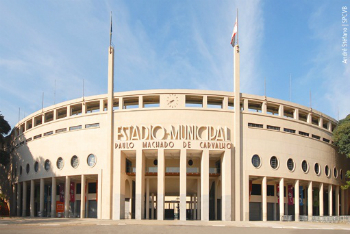Piet Mondrian (1872-1944) was a prominent Dutch artist in the European modernist movement in the early 20th century.
Responsible for a work in which he sought to reflect universal mathematical laws, his name is related to the current of art called neoplasticism.
Mondrian left behind an important work that influenced other artists, especially in graphic arts and architecture.
Featured Works by Mondrian
red tree (1910)
Usually remembered for his geometric works and with pure colors, Mondrian started his artistic career with very organic works, as we can see in red tree.
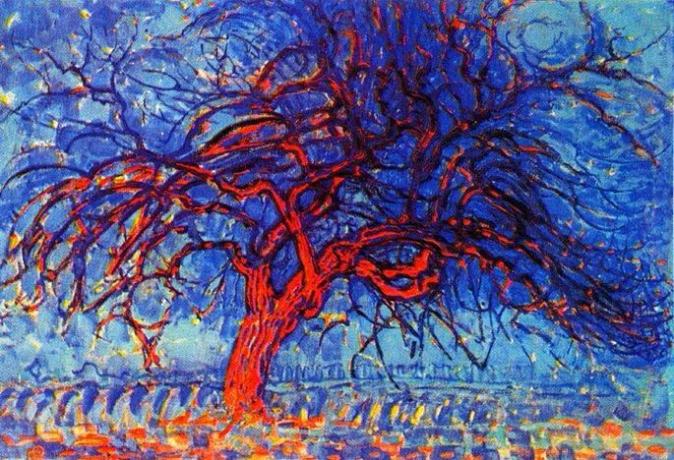
This is a painting completed in 1910, which is part of a series of works depicting trees, and in which the artist uses nature to go in search of abstraction. Here we can also note the influence of Van Gogh's painting.
Gray Tree (1911)
gray tree it is also part of the painter's series of compositions aimed at studying trees, colors and form.

In the frame in question, Mondrian used a monochromatic palette. Furthermore, we can see a strong Cubist influence, in which fragmented forms appear more significantly.
Evolution (1911)
The work Evolution it was completed in 1911 and consists of three canvases showing the figure of nude women together with geometric elements such as the Star of David.
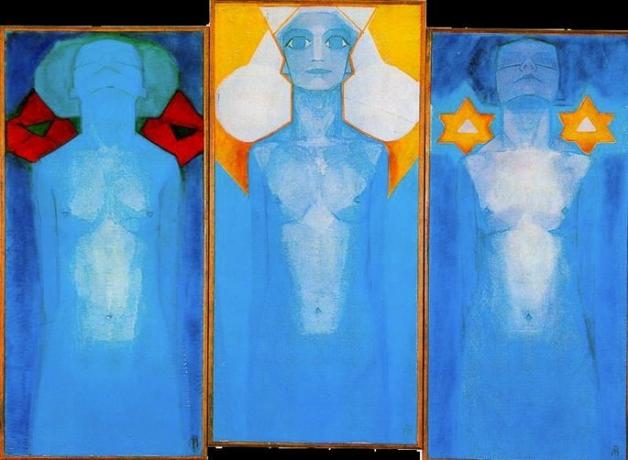
In this work it is possible to perceive a mystical character of Mondrian and the evolution of his own painting towards abstraction.
Checkerboard composition in light colors (1919)
In Checkerboard composition in light colors, Piet Mondrian already had a work more similar to the one that would consecrate him.

On the canvas we see a play of colors in pastel tones where the central foundations of the neoplastic current are presented.
Composition with red, yellow and blue (1921)
In this 1921 work, the artist already exhibits a composition in which the colors presented are the primary ones, arranged in square and rectangular figures delimited by sharp black lines.
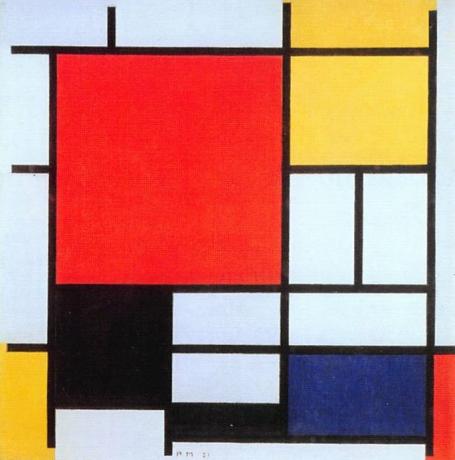
Later, Mondrian created different works using the same bases and colors, but varying the size and arrangement of the shapes.
Broadway Boogie-Woogie (1942)
This work is one of the most significant in Mondrian's production. In it we see a combination of colors arranged in yellow lines as if they were "grids".
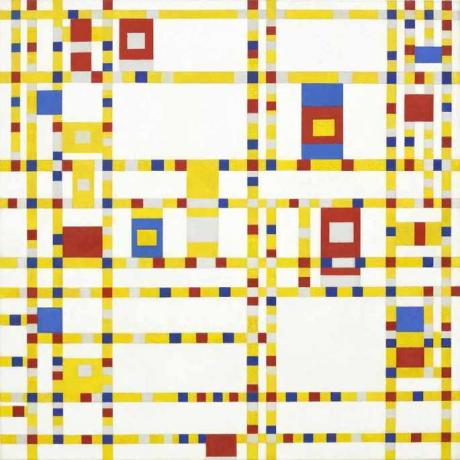
The title of the painting is a tribute to the boogie woogie musical style. The artist was a great lover of New York music.
This painting is currently at the Museum of Modern Art in New York, as it was purchased by the Brazilian artist Maria Martins and donated to the institution.
Biography of Piet Mondrian
Born on March 7, 1872 in the city of Amersfoort, Holland, Pieter Cornelis Mondrian was the son of a school principal and was raised in a Calvinist milieu.
His father expected him to pursue a career as an educator, however, after he graduated in the technique of Mondrian refused to teach, and in 1892 he entered the Amsterdam Academy of Fine Arts.

His early works were figurative, which depicted landscapes such as mills, farms and trees. Among the artists who influenced him during this period are Vincent van Gogh and Seurat.
He became involved in Theosophy in 1908, going on to study Buddhist and other mystical concepts, which are revealed in his paintings.
He moves to Paris, France, three years later, developing an interest in the cubism of Pablo Picasso and Georges Braque. Thus, his work starts to demonstrate geometric elements, but still using figurative forms.
The artist returns to his native Netherlands, the Netherlands, in the years of the First World War (1914-18). There, he interacted with other artists, such as Theo van Doesburg, and in 1917 they created the movement of Stijl, with Portuguese translation for "O Estilo".
In this movement, people believed in clean and objective art, which used clear lines and colors in order to translate universal concepts. It was the principle of neoplasticism, an abstract artistic current that has the artist as its greatest representative.
After the war is over, he returns to Paris and exhibits a very balanced production. He begins to have financial stability and de facto recognition around 1925, when he starts exhibiting works in museums and galleries.
In the last years of his life he lived in the USA, in New York. Thus, the cultural and dynamic life of the city influences his painting. Piet Mondrian dies at the age of 71 in Manhattan, New York, on January 1, 1944.
You may also be interested:
- neoplasticism
- Modern Art
- European vanguards



